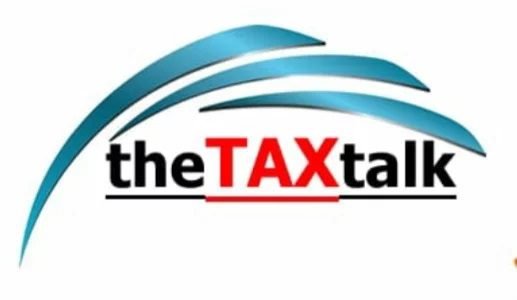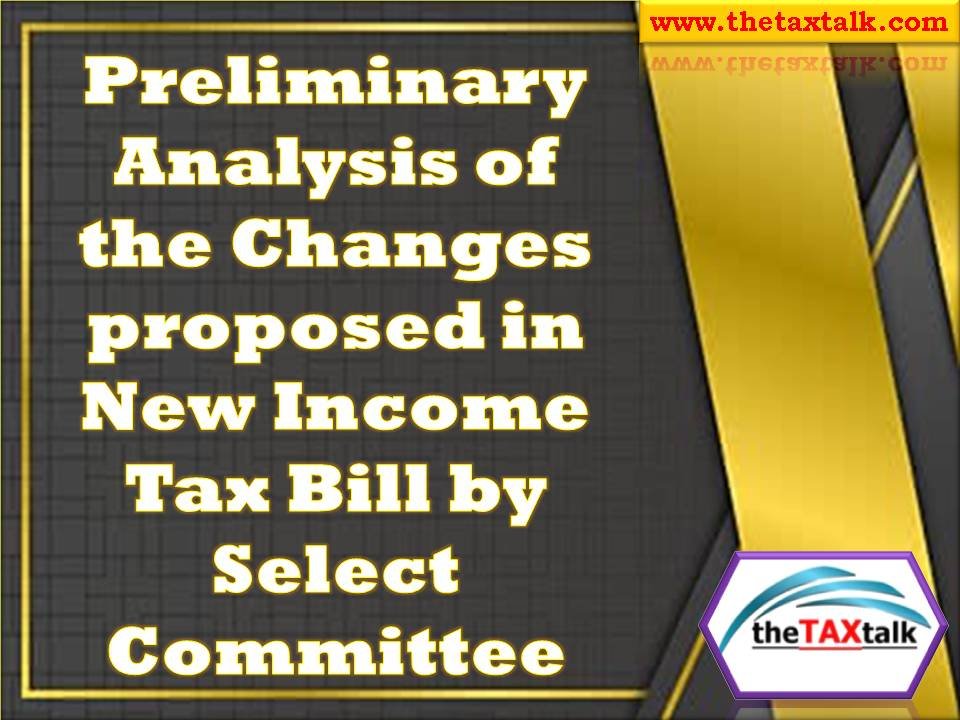![]()
Preliminary Analysis of the Changes proposed in New Income Tax Bill by Select Committee
SELECT COMMITTEE ON THE INCOME INCOME-TAX BILL, 2025 has submitted its recommendations to Finance Ministry
The amendments and changes made by the Select Committee to the new Income tax bill 2025 broadly reflect two types of revisions:
1. Structural & Re-organization Changes:
• Complete re-codification and re-structuring:
The Bill is heavily restructured compared to the current Income-tax Act, 1961. It is arranged in 23 comprehensive Chapters plus 15 Schedules. The structure attempts to follow a logical sequence of:
• Charging provisions
• Computation provisions
• Special provisions (e.g., GAAR, MAT, etc.)
• Administration, Appeals, Recovery, Penalties, and Miscellaneous.
• Faceless Regime: Expanded provisions on faceless jurisdiction for assessments, collection of information, appeals, etc.
• Specificity for new economic activities: Special provisions for areas such as crypto currency, digital transactions, SEZs, offshore banking, and AI-driven businesses are clearly outlined.
2. Key Substantive Amendments Identified from the Revised Bill:
Area of Law Major Change in Revised Bill (vs. Original Draft)
Definitions Expanded definitions of terms like ‘capital asset,’ ‘amalgamation,’ ‘demerger’ with more clarity and alignment to commercial realities.
Taxation of Non-Residents & Global Income More structured provisions for non-residents, offshore activities, digital assets, etc. with detailed computational rules.
Presumptive Taxation Broadened scope, particularly for startups, gig-economy workers, and digital contractors.
Capital Gains Specific deeming provisions for Market Linked Debentures, crypto-assets, specified securities, etc.
Deductions & Exemptions Cleaned up and consolidated with modern focus: ESG investments, EV loans, startup investments receive priority.
GAAR, Transfer Pricing, Anti-Abuse Refined provisions to address Base Erosion, Profit Shifting (BEPS) aligned with OECD guidelines.
Taxation of Charitable Entities (Section 11 analogues) Tightened rules on commercial activities, corpus donations, accumulation of income, and introduced stricter compliance framework.
Procedural Law Timelines for assessments, faceless procedures, e-assessments, audits, appeals, and DRP processes codified.
Penalty Provisions Detailed penalty structures aligned to non-compliance across various regimes (TDS, reporting, crypto, audits).
Prosecution Specific offenses, designated Special Courts, procedures streamlined.
Refunds & Recovery More clarity on priority of set-offs, withholding powers, interest on refunds.
Schedules Streamlined and modernized schedules for depreciation, exemptions, rates.
Illustrative Key Amendments (Extracted Samples):
1. Capital Asset Definition Expanded – Clearer rules on what constitutes agricultural land, distance limits, population thresholds, impact on capital gains.
2. Crypto currency Reporting – Mandatory reporting obligations on crypto-transactions (Section 509) introduced, along with penalties.
3. Advance Pricing Agreements (APA) – More detailed APA regime, including secondary adjustments, safe harbor rules.
4. Faceless Procedures – Expanded to faceless collection of information, surveys, inspections, and assessments.
5. Registered Non-Profit Organizations – More stringent commercial activity restrictions, detailed definitions of violations, and consequences.
6. Specific Provisions for New Age Companies – e.g., offshore banking, financial services in IFSC, tonnage tax retained for shipping.
7. New Tax Regimes – For individuals, HUFs, cooperative societies, etc., clarified in specific sections 199 to 205.
8. Appeals Mechanism Streamlined – New powers to Joint Commissioners (Appeals), time-bound procedures, and reduction of repetitive appeals.
Summary of the Direction of Changes:
Modernization & Simplification: Structure reflects efforts to align with global best practices and make law more readable.
Compliance-Heavy: Significant record-keeping, audit, reporting obligations enhanced, especially in cross-border and new-economy sectors.
Targeted Anti-Avoidance: OECD-aligned GAAR, BEPS, Digital Taxation focus.
Technology Adoption: Faceless, paperless administration made the default.
Charity Regulation Tightened: Reflects a move to curb misuse of Section 11-like benefits.


